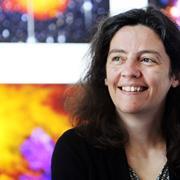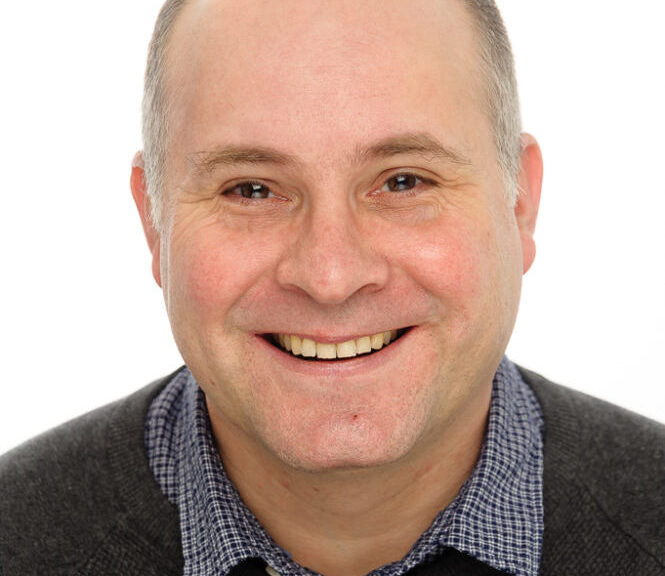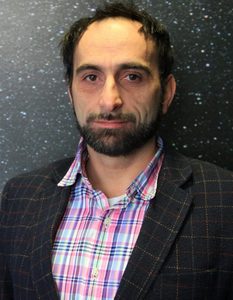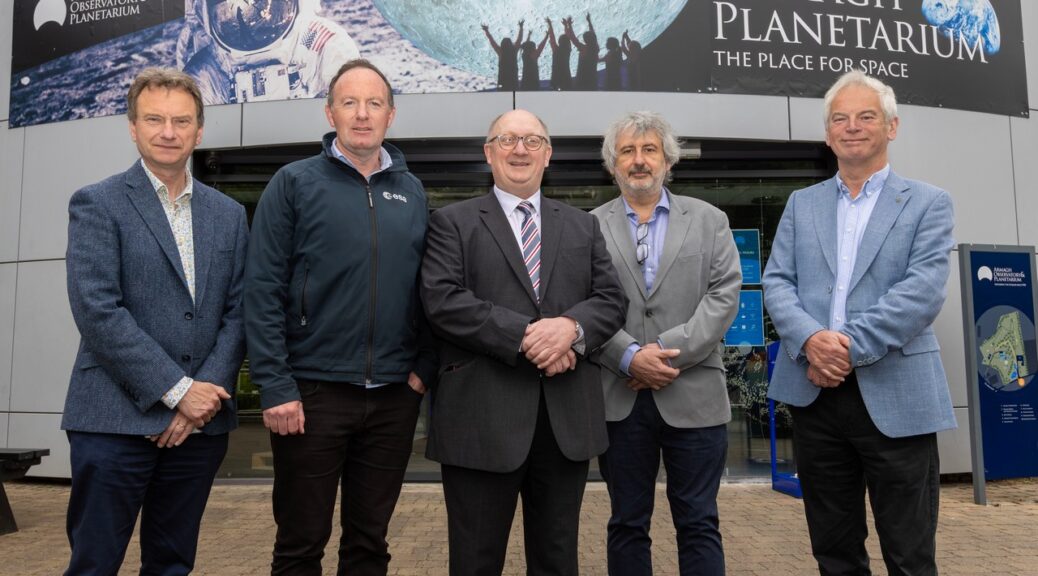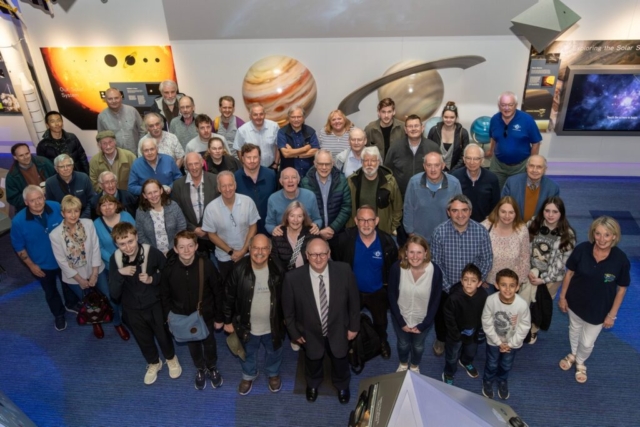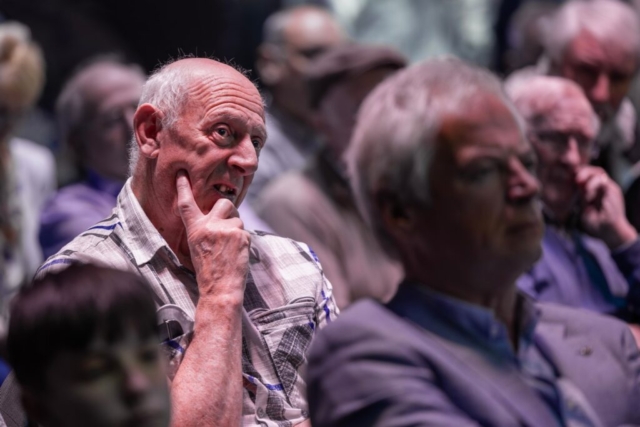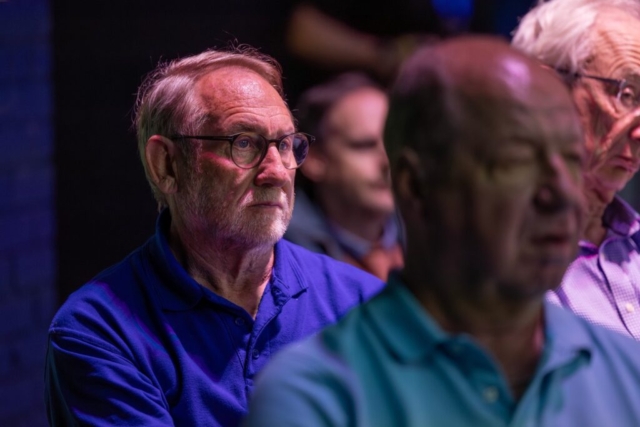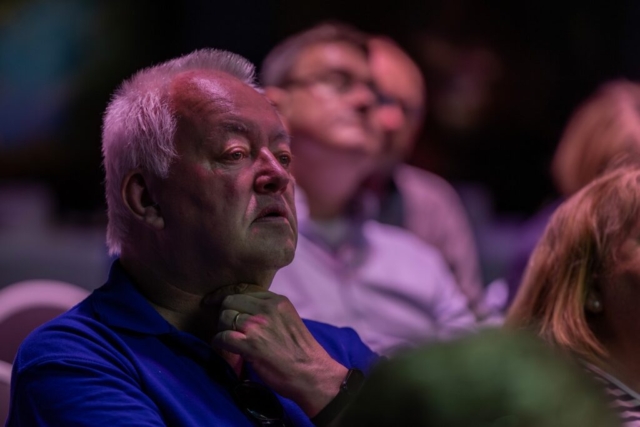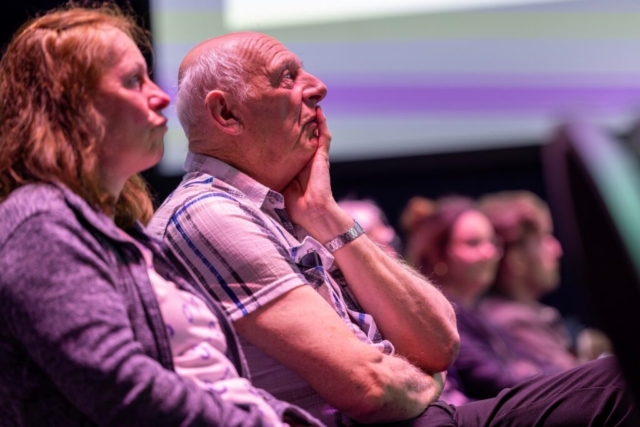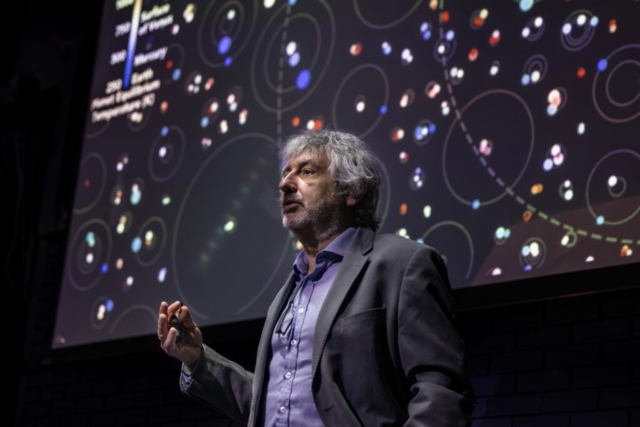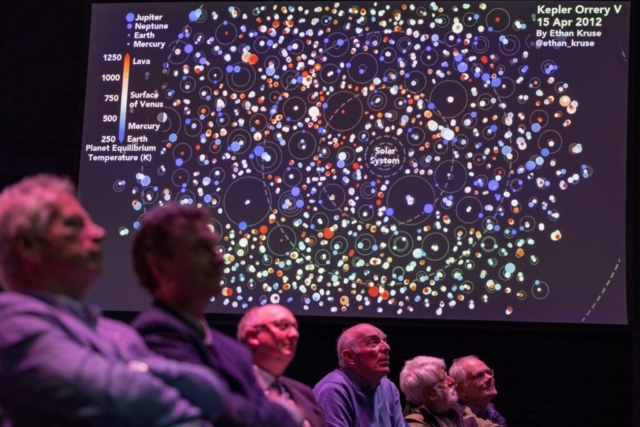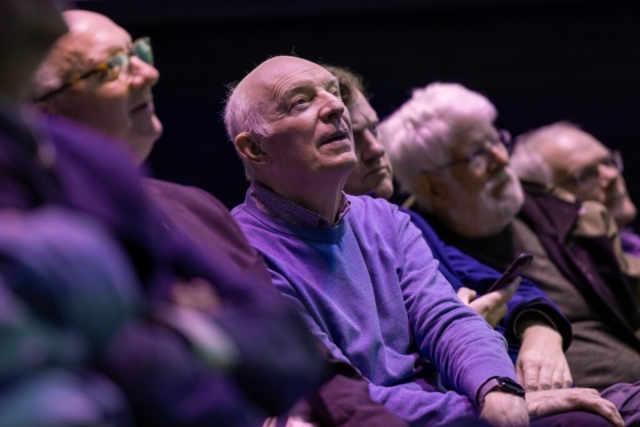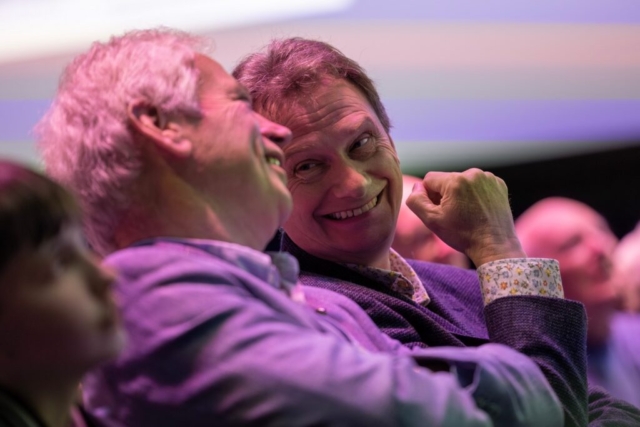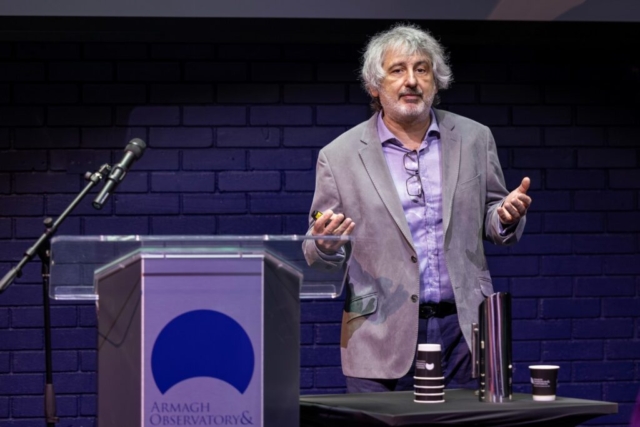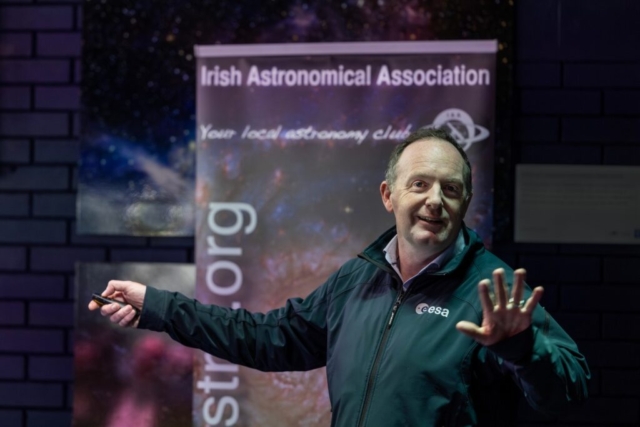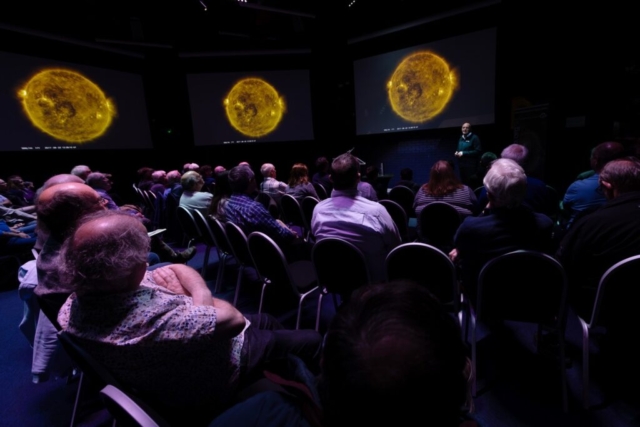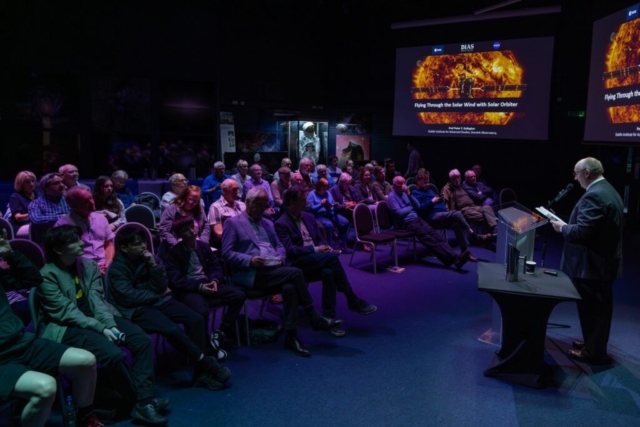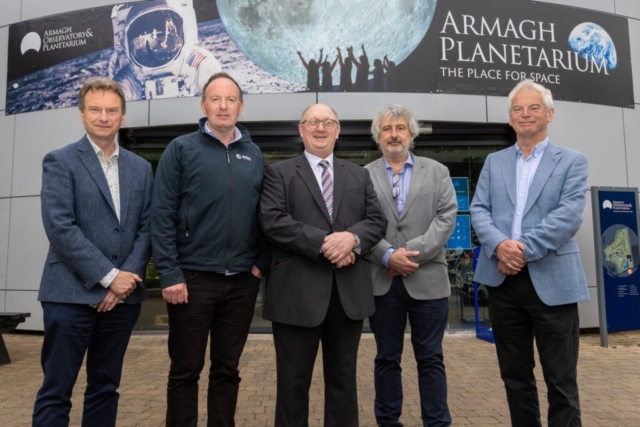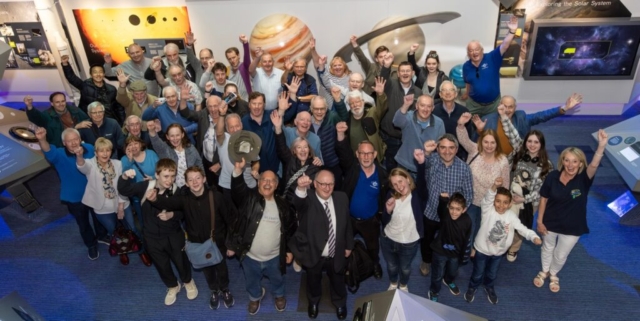This major event will celebrate the 50 years since the formation of the IAA (formerly the Belfast and Armagh Centres of the IAS). We have FOUR major speakers in the afternoon session, exclusive access to the Star-theatre with great shows all morning, tours of the observatory and Astropark and another little-known astronomy site. Lunch and snacks will be provided free on-site. There will also be an optional special anniversary dinner in the Armagh City Hotel, the cost of which includes wine.
NB – There are still some places available – it’s not too late to book!
WE ARE VERY GRATEFUL TO ARMAGH OBSERVATORY AND PLANETARIUM FOR HOSTING THIS EVENT.
NB: Non-IAA members and guests are welcome too: it will be a great day, not to be missed.
HIGHLIGHT SPEAKERS:
Professor Peter Gallagher, Head of School of Cosmic Physics, DIAS: “Flying Through the Solar Wind with Solar Orbiter”
ABSTRACT:
The Solar Orbiter missions launched in February 2020 and since then has been winding its way through the solar system into the inner heliosphere, where it is now giving us new views and measurements of the solar wind and solar transients. In this talk, I will describe the mission, the insights that Orbiter is giving us, and describe the Solar-Telescope Imaging X-rays (STIX) instrument that the team at the Dublin Institute of Advanced Studies is involved in. In addition, I will describe the solar and geomagnetic activity that we have had in recent weeks together with prospects for future solar activity.
Biography: Professor Peter Gallagher is Head of Astronomy & Astrophysics and Director of Dunsink Observatory, in the Dublin Institute for Advanced Studies, Ireland. He was also instrumental in establishing the I-Lofar Radio Telescope Observatory in Birr Castle Demesne, which is part of the LOFAR Europe-wide network.
Professor Stefano Bagnulo, Armagh Observatory and Planetarium
“Auroral phenomena and metal scars at the surface of white dwarfs”
Abstract: When stars like our Sun reach the end of their lives, they shrink down to Earth-sized objects called white dwarfs. Remarkably, about one in four white dwarfs possesses an incredibly strong magnetic field — often much stronger than anything we can create on Earth. Many of these white dwarfs capture remnants of their planetary systems, such as comets, asteroids, or even small planets, which fall onto their surfaces. I will describe the recent discovery of a white dwarf where the debris of an asteroid similar to Vesta in size have been funneled by the star’s magnetic field, and concentrated around the magnetic poles, creating a phenomenon reminiscent or Earth’s auroras. I will explain what these observations tell us about exo-solar planets, and about the atmospheres of white dwarfs. I will also describe the telescopes that enabled this discovery, and provide insight, more in general, into the modern methods used for astronomical observations.
Biography: Stefano Bagnulo studied Physics at the University of Florence in Italy, and obtained his PhD at QUB, Belfast, in 1996. He has worked at the University of Vienna, and at the Paranal Observatory in Chile, where he was a member of the Science Operations Team of the ESO Very Large Telescope. He joined Armagh Observatory in 2007.
Professor Tom Ray, School of Cosmic Physics, DIAS: “Building the Extremely Large Telescope: Challenges and Hopes for the Future”
Abstract: The Extremely Large Telescope (ELT) is over half-way to completion. Its construction will not only be a
milestone in the history of the European Southern Observatory but also for Astronomy. In my talk I will explain the challenges we have faced, the novel solutions, and the hoped-for scientific return. I will also describe the first set of instruments and what we hope they will achieve.
Biography: Professor Tom Ray is a senior professor in the DIAS School of Cosmic Physics,
He is Co-Principal Investigator of the Mid-Infrared Instrument on the James Webb Space Telescope, and also leads a group in DIAS developing optical/near-infrared Microwave Kinetic Inductance Detectors (MKIDs) for use in Astronomy. He is an ERC Advanced Grant Laureate and his other interests include ancient astronomical sites, like Newgrange, and Historical Astronomy.
Tom received his primary degree in Theoretical Physics from Trinity College Dublin in 1978, followed by an MSc and PhD from the University of Manchester while carrying out research in Radio Astronomy at Jodrell Bank. He subsequently became a research fellow at the University of Sussex, an Alexander von Humboldt Fellow at the Max Planck Institute for Astronomy in Heidelberg and then returned to Ireland as a Lecturer in University College Dublin. He became one of the youngest professors in the Dublin Institute for Advanced Studies in 1986.
Tom is the Robert Ball Professor in Trinity College Dublin, a member of the Royal Irish Academy (MRIA), a Fellow of the Royal Astronomical Society (FRAS), and a Member of the American Association for the Advancement of Science.
Professor Alan Fitzsimmons, Astrophysics Research Centre, QUB “Exocomets”
Abstract: Every year roughly 60 more comets are discovered orbiting our Sun. But for decades, astronomers have been discovering comet-like objects in other Solar systems. Slowly but surely astronomers have been uncovering their secrets. This talk will briefly review how astronomers discover and understand comets formed in other Solar systems, some light-years away and some a bit closer, and how much we understand about them at present.
Biography: Professor Alan Fitzsimmons has been an astronomer at Queen’s University Belfast for almost half the orbit of Halley’s Comet. His research has mainly involved finding that asteroids and comets are red, or gassy, or red and gassy. His current interests are finding marks to give in student’s exam papers, and planning a holiday. (This is what Alan supplied – needless to say he is being FAR too modest, as we all know!)
DINNER: After the Dinner in the Armagh City Hotel, there will be a presentation by members of some historic photos, and the recent Total Solar Eclipse in North America, and some of the best recent aurora photos.
COST:
Full event, including lunch and morning and afternoon light refreshments, plus evening dinner, including wine: £65 adults, £30 children
Day events only as above, but excluding dinner: Adults £20, children £10.
PAYMENT: Must be received NO LATER than Thursday 16 May!
By cheque, payable to Irish Astronomical Association, to IAA Secretary, Mary Kirwan-Mackey, 89 Old Gransha Rd, Bangor, Co Down, BT19 7HA. or
Paypal: Go to www.irishastro.org and click the donate button or
Bank Transfer: To; Irish Astronomical Association, Sort code 950114, Account No 20095443, or contact secretary at: Callistoboxer@hotmail.com for advice/details
NB: IF you turn up on the day, with payment, we won’t turn you away provided that there are still places available.
TIMETABLE:
09.30: Registration, tea coffee.
10.00: Stardome – welcome by Director of AOP, Professor Michael Burton, and IAA President Paul Bates
10.15: Stardome – Show “CapCom Go”
11.00: Stardome – Show “Pink Floyd: Dark Side of the Moon”
11.40: Stardome – Show: Special Showcase production by AOP
12.00: Copernicus Hall: Lunch – Soup and Sandwiches
13.00: Copernicus Hall: Lecture: Prof Peter Gallagher – ‘Solar Orbiter’
13.50: Copernicus Hall: Lecture: Prof Stefano Bagnulo – ‘Aurorae and Metal Scars on White Dwarfs’
14.40: Copernicus Hall: Tea, Coffee, light snacks
15.00: Copernicus Hall: Lecture: Prof Tom Ray – ‘Building the Extremely Large Telescope’
15.50: Copernicus Hall: Lecture: Prof Alan Fitzsimmons: “Exocomets”
16.40: Copernicus Hall: Closing comments + outline of rest of programme
17.00: All must be out of the Planetarium!
17.15: Tours of Observatory, Astropark and Hill of Infinity. (NB, the latter involves walking on grass uphill: wear suitable footwear!). Because of space limitations, only a small group can enter the main observatory building at one time, so there will be several groups, and the tours will operate in rotation. Unfortunately, the tour inside the building, and the Hill of Infinity, are not suitable for wheelchair users, or anyone with severe mobility restrictions.
18.30 (approx). Walking visit to the Celestial Sphere, Upper English Street.
19.15 (approx) Make your way to the Armagh City Hotel: for check in, comfort breaks, relaxation
20.00 Dinner in Armagh City Hotel
Followed by presentation by members of some historic events, the recent total solar eclipse and aurora




